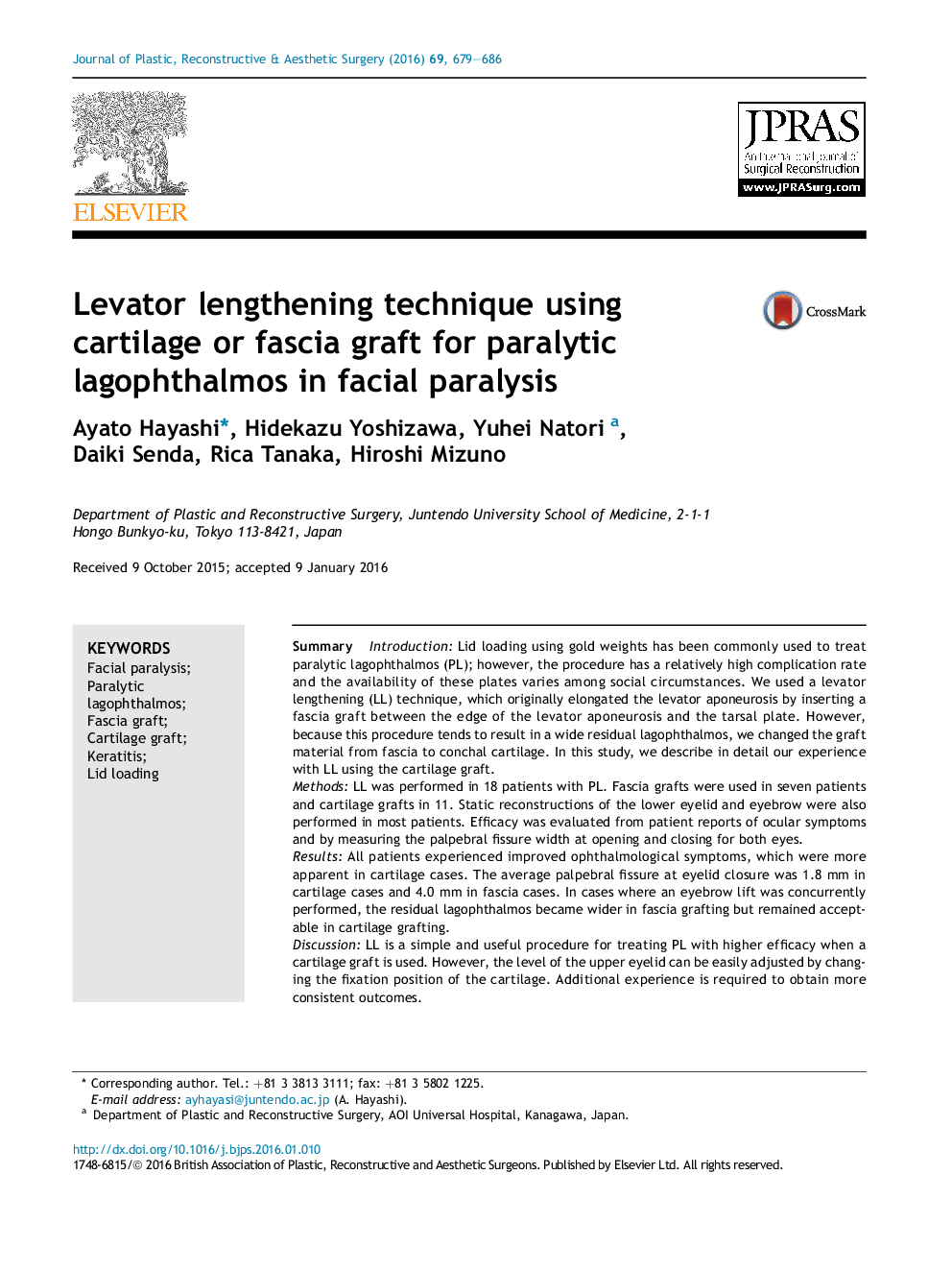| Article ID | Journal | Published Year | Pages | File Type |
|---|---|---|---|---|
| 4117094 | Journal of Plastic, Reconstructive & Aesthetic Surgery | 2016 | 8 Pages |
SummaryIntroductionLid loading using gold weights has been commonly used to treat paralytic lagophthalmos (PL); however, the procedure has a relatively high complication rate and the availability of these plates varies among social circumstances. We used a levator lengthening (LL) technique, which originally elongated the levator aponeurosis by inserting a fascia graft between the edge of the levator aponeurosis and the tarsal plate. However, because this procedure tends to result in a wide residual lagophthalmos, we changed the graft material from fascia to conchal cartilage. In this study, we describe in detail our experience with LL using the cartilage graft.MethodsLL was performed in 18 patients with PL. Fascia grafts were used in seven patients and cartilage grafts in 11. Static reconstructions of the lower eyelid and eyebrow were also performed in most patients. Efficacy was evaluated from patient reports of ocular symptoms and by measuring the palpebral fissure width at opening and closing for both eyes.ResultsAll patients experienced improved ophthalmological symptoms, which were more apparent in cartilage cases. The average palpebral fissure at eyelid closure was 1.8 mm in cartilage cases and 4.0 mm in fascia cases. In cases where an eyebrow lift was concurrently performed, the residual lagophthalmos became wider in fascia grafting but remained acceptable in cartilage grafting.DiscussionLL is a simple and useful procedure for treating PL with higher efficacy when a cartilage graft is used. However, the level of the upper eyelid can be easily adjusted by changing the fixation position of the cartilage. Additional experience is required to obtain more consistent outcomes.
